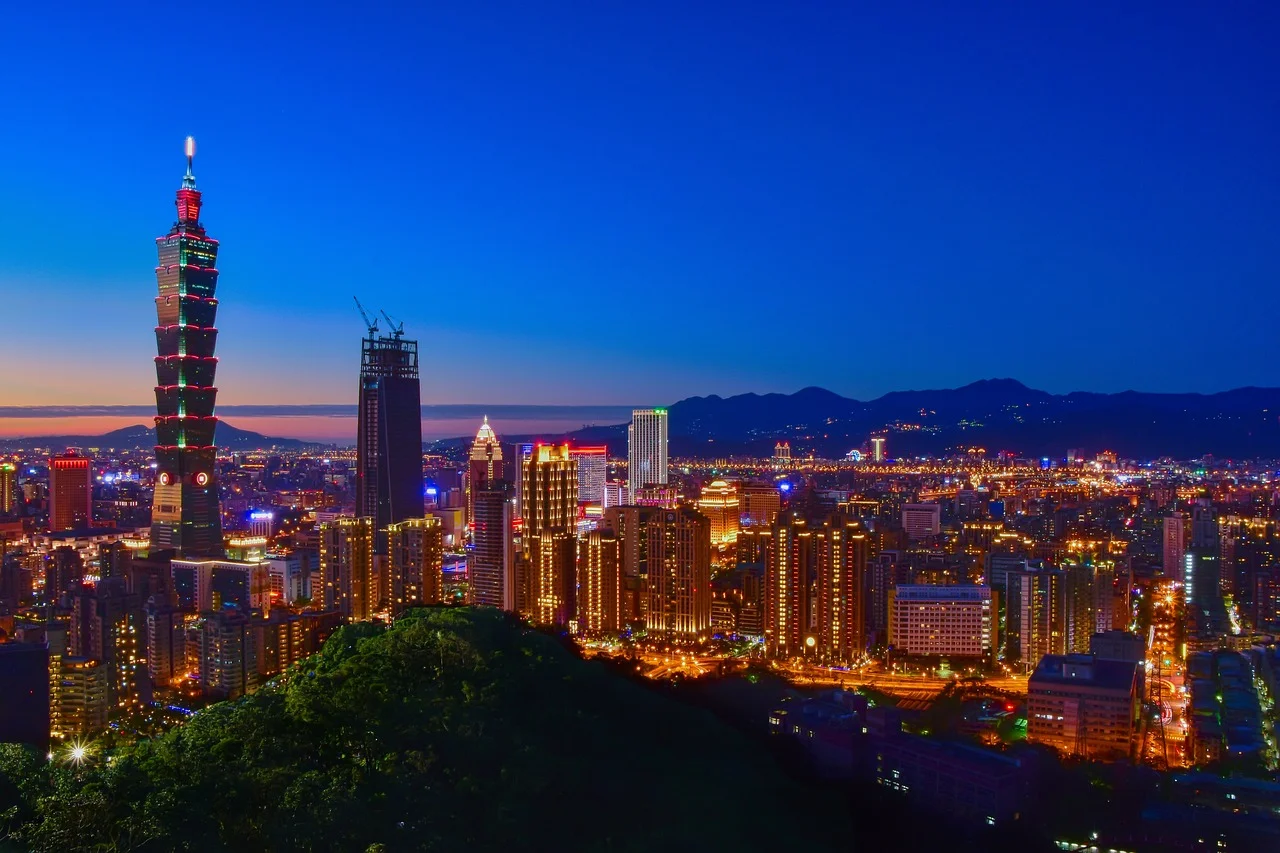
Taipei 101, once the tallest building in the world, is not only a symbol of Taiwan’s economic progress but also an architectural wonder. Located in the heart of Taipei, Taiwan’s capital, this iconic skyscraper has become one of the most recognizable landmarks globally. More than just a building, it is a representation of modern innovation, cultural heritage, and sustainable design.
History and Significance of Taipei 101
Completed in 2004, Taipei 101 held the title of the world’s tallest building until 2010, standing at 508 meters. Its name derives from its 101 floors, with the structure blending cutting-edge engineering with traditional Asian symbolism. Designed by architect C.Y. Lee, the building was meant to represent the rise of Taiwan as a major economic force, showcasing its ambition and resilience.
The building was created to resemble a bamboo stalk, a plant that symbolizes strength, resilience, and growth in Chinese culture. Each segment of the building represents a section of bamboo, rising into the sky, symbolizing prosperity. Taipei 101 has since become a cultural icon, representing the fusion of modernity and tradition in Taiwan.
Architecture and Design
Taipei 101’s architectural design is a blend of modern aesthetics and traditional Chinese elements. The building’s most defining characteristic is its tiered structure, which is reminiscent of a pagoda. This tiered design also offers structural benefits, allowing the building to withstand strong winds and seismic activity, both of which are common in Taiwan.
The design of Taipei 101 was heavily influenced by the need to make the skyscraper earthquake-proof. Taiwan, located near the boundary of the Philippine Sea Plate and Eurasian Plate, is susceptible to frequent earthquakes. The engineers incorporated advanced seismic technologies into the design, ensuring that Taipei 101 could withstand earthquakes measuring up to 9.0 on the Richter scale. At the heart of this system is the world’s largest tuned mass damper, a 660-ton steel pendulum located between the 87th and 92nd floors. This massive ball helps to stabilize the building during high winds and earthquakes, absorbing kinetic energy and minimizing structural sway.
Sustainability and Green Technology
What makes Taipei 101 a modern marvel is not just its height but its commitment to sustainability. In 2011, Taipei 101 achieved LEED Platinum certification, making it the tallest green building in the world at the time. Its sustainability features include an advanced rainwater recycling system, energy-efficient lighting, and low-emission glass that reduces heat gain, lowering the need for air conditioning.
The building’s eco-friendly systems and energy-saving measures reflect Taiwan’s growing commitment to sustainability and environmental responsibility. Taipei 101’s green transformation was a massive undertaking, costing NT$60 million (approximately USD 2 million) but ultimately reducing energy consumption by 30%. This green certification highlights the fusion of technological innovation with environmental consciousness, setting a benchmark for skyscrapers worldwide.
Cultural and Economic Impact
Beyond its architectural and engineering marvels, Taipei 101 has a significant cultural and economic role. It serves as a business hub, housing some of the most prestigious corporate offices and financial institutions in Taiwan. The Taipei 101 Mall, located on the lower floors, is home to luxury brands such as Louis Vuitton, Gucci, and Cartier, attracting both local shoppers and international tourists. This mall has become a symbol of Taiwan’s affluence and a premier shopping destination in Asia.
Moreover, the building hosts a variety of cultural events and festivals, including the world-famous Taipei 101 New Year’s Eve fireworks display, which draws thousands of spectators from around the world. The fireworks, launched from different levels of the building, create a breathtaking spectacle that lights up the sky over Taipei, symbolizing hope and prosperity for the coming year.
Observation Deck: A Panoramic View of Taipei
One of the most popular attractions in Taipei 101 is its observation deck, located on the 89th floor. Visitors can take the world’s fastest elevator, which travels at a speed of 60.6 km/h, to reach the deck in just 37 seconds. Once there, visitors are treated to an unparalleled view of Taipei City and its surroundings.

On clear days, the observation deck offers a 360-degree panoramic view, with landmarks such as the Yangmingshan National Park, Elephant Mountain, and the sprawling cityscape of Taipei visible from the top. For those interested in architecture and urban development, the view from Taipei 101 offers a unique perspective on the blending of natural landscapes with the urban environment.
Taipei 101’s Role in Shaping the Skyline of Taipei
Taipei 101 is more than just a building; it is an integral part of the city’s skyline. It symbolizes the modernization of Taipei, marking the city’s transition into a global hub for technology, finance, and innovation. While other cities around the world boast of taller buildings, Taipei 101 remains unique in its fusion of traditional design, cutting-edge technology, and its role as a cultural icon.
The building has also become a symbol of Taiwan’s national identity, as it stands out amidst the city’s skyline, representing Taiwan’s perseverance and forward-thinking vision. Taipei 101’s towering presence dominates the skyline, yet it harmonizes with the surrounding urban landscape, adding to the character and charm of Taipei.
Conclusion
In summary, Taipei 101 is not just an architectural masterpiece but a testament to Taiwan’s progress, resilience, and commitment to sustainability. Its innovative design, seismic technology, and eco-friendly systems make it a global benchmark for modern skyscrapers. Whether you’re a tourist marveling at its observation deck, a shopper exploring its luxury mall, or a business professional working in one of its corporate offices, Taipei 101 stands as a symbol of ambition, culture, and environmental responsibility.